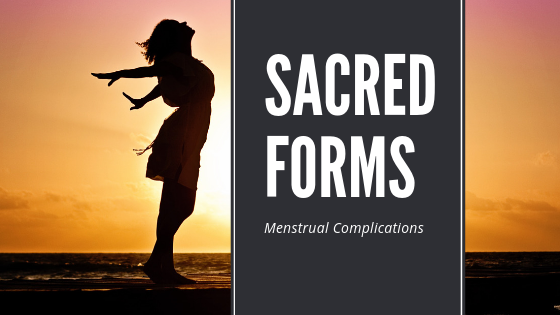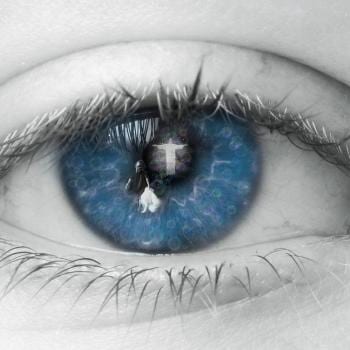
Given how many different hormones and body parts are involved in the menstrual cycle, it’s not surprising many women have complicated cycles. These menstrual complications range from mildly inconvenient to physically disabling. This information is especially important for Catholic men and women to know if we want to have realistic discussions about marriage and Natural Family Planning since some of these issues make it difficult, or even impossible, to predict fertility.
Clergy who hear confessions and/or advise married couples should learn this information so they can provide pastoral and accurate guidance to couples who may be struggling with these issues. As priests are all men who never experience a menstrual cycle (or the problems that can go along with it) themselves, they have to put special effort into understanding the female body.
Some menstrual complications can be straightened out by using hormonal medication. The hormones in these pills take the place of the hormones a woman’s body isn’t producing correctly. Sometimes these pills are used as birth control, but many women use them to alleviate hormonal imbalances that cause them pain and interfere with their lives and fertility. While these medically necessary pills work for some menstrual complications, other complications don’t have decent treatment options yet. It’s important for us to fund more research on these issues that affect women’s health and fertility.
Premenstrual syndrome (PMS)
Not all women experience premenstrual syndrome (PMS). That’s a misconception.
PMS symptoms begin one to two weeks before a woman begins her period. So, the old, “What? Are you on your period or something?” that gets thrown at a woman who’s justifiably upset about something doesn’t even make sense.
For women who experience PMS, their symptoms could include pain, fatigue, weight gain, breast tenderness, acne, bowel issues, appetite changes, changes in sex drive, headaches, and emotional changes. Women may experience all sorts of different combinations of these symptoms. One woman may have headaches and breast tenderness without mood changes while another woman may experience intense emotional changes without any physical symptoms.
It’s important to understand that when a spouse has promised to do the dishes three times, and it’s three days later and they still aren’t done, and the wife loses her temper, that’s not PMS. That’s a normal emotional response to someone breaking a promise and making their spouse stressed out.
If a woman’s PMS symptoms reach the point of seriously interfering with her life, that could be premenstrual dysphoric disorder (PMDD). The symptoms of PMDD are similar to PMS, but more severe.
Abnormal Bleeding
Amenorrhea is when a woman stops having her period (for at least 90 days), even though she isn’t pregnant, breastfeeding, or menopausal.
Oligomenorrhea is when a woman has periods, but they happen infrequently. This makes it difficult, or sometimes impossible, to track her cycles.
Abnormal bleeding usually means a period that lasts longer than a week (unless an 8 or 9 day period is normal for you.) It might also be an unusually heavy flow (soaking more than one pad or tampon in an hour) or bleeding between your normal periods.
Irregular Menstrual Cycles
Irregular menstrual cycles may or may not be a serious issue. After puberty, a woman’s cycle usually levels out and becomes fairly predictable. If her menstrual cycle lasted 21 days last month, it should last close to 21 days this month. Some women can predict their cycles to the day, while others can be fairly confident of at least which week their period will start, though they can’t pin down an exact date.
For some women, when their cycle will begin is a total mystery.
Irregular periods can be caused by a number of things, and sometimes doctors can’t find an explanation for a woman’s irregular period, let alone a treatment.
Stress: If a woman is under a lot of stress, it can temporarily affect her menstrual cycle.
Lifestyle changes: If a woman gains or loses a lot of weight quickly, if she drastically changes her diet or exercise plan, or even if she’s traveling, it can affect her cycle.
Breastfeeding: The hormone that produces milk, prolactin, decreases the amount of estrogen a woman has, which inhibits ovulation. It’s important to understand that a woman can ovulate (and get pregnant) while breastfeeding, even if her periods haven’t returned since she gave birth. Breastfeeding, by itself, is not a reliable way of preventing pregnancy. If a woman’s periods return while she’s breastfeeding, it’s common for them to remain irregular for several months, which makes it difficult to keep track of when she’s ovulating.
Birth control: Since birth control pills contain hormones that won’t allow a woman’s ovaries to release eggs (she’s can’t ovulate), taking birth control pills can alter a woman’s cycle. Going off birth control pills can also change her cycle for several months after she stops using them. Some pills even cause bleeding between periods. Intrauterine devices (IUDs) can also cause irregular bleeding.
Uterine polyps or fibroids: Uterine polyps are small, usually noncancerious growths in the uterine lining. Uterine fibroids are tumors (usually noncancerous) attached to the wall of the uterus. They can both cause pain and abnormal bleeding, though they aren’t always painful, so a woman might not know she has them.
Endometriosis: The uterus is lined with endometrial tissue, which is shed each month during a woman’s period. When a woman has endometriosis, this tissue grows outside of her uterus. It often attaches to her ovaries and fallopian tubes, but it can also grow onto her intestines and other abdominal organs. It can cause abnormal bleeding, painful cramps, and pain during sex.
Pelvic Inflammatory Disease: This is a bacterial infection caused by bacteria entering the vagina and spreading to the uterus. The usual symptoms are a heavy vaginal discharge, irregular periods, pain, and fever. It’s possible to have no noticeable symptoms at all.
Polycystic Ovary Syndrome (PCOS): When a woman has PCOS, her ovaries produce excessive androgens. Both women and men produce androgens, but they’re usually found in larger amounts in men. Cysts can form in her ovaries as a result. The hormonal changes can prevent eggs from maturing, causing irregular ovulation. It can sometimes cause irregular periods or the cessation of periods.
Premature Ovarian Failure: This happens when a woman is under the age of 40 and her ovaries don’t function normally. This might be because her ovaries don’t produce normal amounts of hormones or because they don’t release eggs regularly. A woman with premature ovarian failure could possibly get pregnant, though she might have irregular or only occasional periods, making it difficult to track her cycles.
Uterine or cervical cancer: Uterine cancer originates in the layer of cells that form the lining of the uterus. Cervical cancer affects the cells of the cervix. Both can cause unusual bleeding.
Medications: Steroids and blood thinners can affect a woman’s periods. Other medications can cause changes as well.
Other medical conditions: If a woman has a bleeding disorder, issues with her thyroid or pituitary glands, hormonal imbalances, or other medical conditions, it can cause her to have irregular periods.
Doctors will usually prescribe hormonal birth control if a woman’s irregular cycles are causing problems for her. If the irregular cycles are caused by a hormonal imbalance, these pills might cause her cycles to become more regular. Occasionally, surgery can help correct a problem.
Many times, nothing works. We don’t currently have solutions for every menstrual complication. Many women live with these problems without any workable treatment options because they simply don’t exist yet. This is one reason why it’s so important for us all to understand women’s bodies. We have to understand the need for further medical research.
More Sacred Forms posts
Sign up with your email or follow me on Twitter or Facebook to keep up with new posts.












